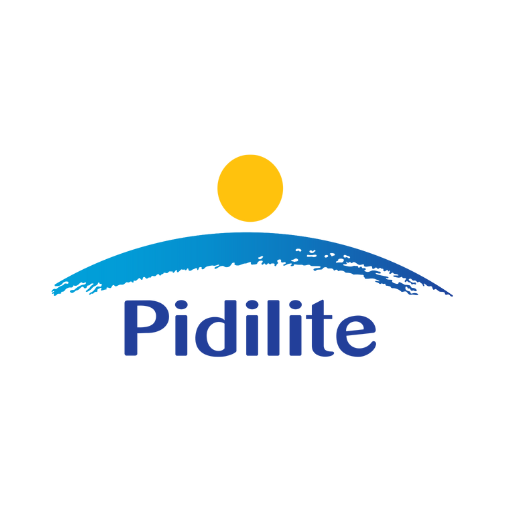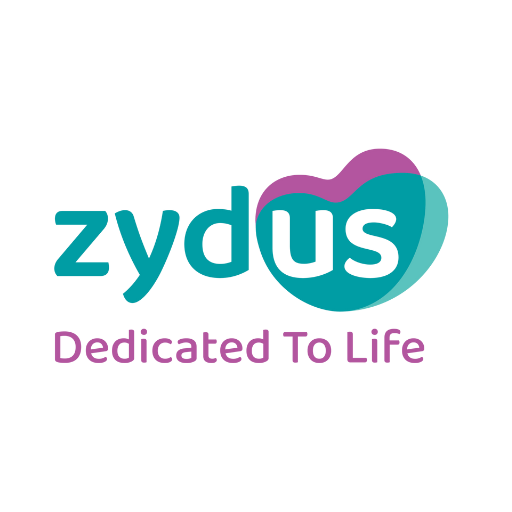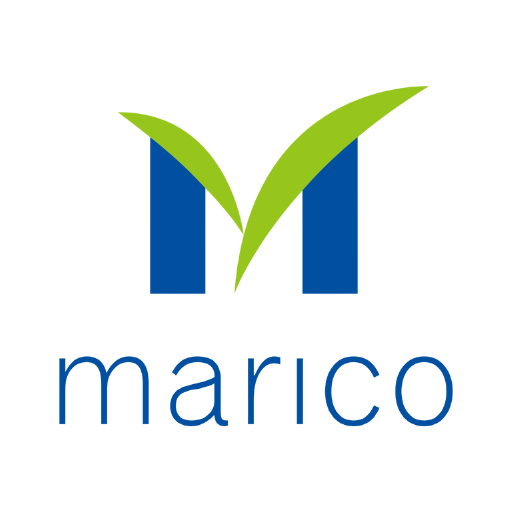How a multi-generational workforce is changing the future of work in India
From baby boomers to Gen Zs, India’s evolving workforce is navigating challenges, embracing diversity, and reshaping the future of work through collaboration and innovation.

This story belongs to the Fortune India Magazine July 2025 issue.
“EXPERIENCE NEVER GETS OLD” — is one of the key taglines from The Intern, a 2015 Hollywood flick directed by Nancy Meyers. The film explores the unlikely friendship between Ben Whittaker, a 70-year-old widower (played by Robert De Niro) and Jules Ostin (Anne Hathaway), a young CEO. When Whittaker joins a fashion startup as a senior intern, he brings wisdom and quiet strength to a fast-paced world driven by hustles and hashtags. As he earns Ostin’s trust, the film unfolds themes of purpose, balance, and the value of intergenerational connection, proving that experience never goes out of style.
Seventy-year-old interns such as Ben Whittaker may be far and few in the real world, but multi-generational workforces are definitely the norm. The character of Ben Whittaker can well be called a ‘perennial’ — individuals who are curious, adaptable, and motivated, regardless of their age. They are known for their willingness to learn, embrace new technologies, and contribute to a positive work environment. Whittaker may have led an archaic telephone book business, but he made himself relevant by adapting to the chaos of a startup. His wisdom helped the CEO to learn to pause and take measured moves. Whittaker eventually made himself indispensable to the startup.
If one were to look at the Indian startup ecosystem, a Ben Whittaker equivalent would probably be Vivek Gambhir, a former McKinsey hand and Godrej Consumer Products veteran, who was made the CEO of boAt, an audio, wearables, and accessories startup. “The company was growing exponentially, but we needed someone who could set up processes and bring in the much-needed heft. Vivek taught us to think big, think strategically. Organisation development under him was one of the big things,” says Samir Mehta, co-founder and CEO, boAt.
When Gambhir was CEO of boAt (he is chairman now), both Mehta and fellow co-founder Aman Gupta reported to him. “We attracted a really good talent pool which wouldn’t have been possible with me and Aman alone. Vivek has gravitas, people look up to him. He ensured we got the right set of people, he taught us how to build an organisation, how to build a culture, how to foster innovation and how to think about innovation continuously,” Mehta further explains.
While shades of grey are indeed important, the fact remains that 53% of the global workforce comprises Gen Zs and millennials, according to an analysis by professional services firm EY. By 2030, this cohort will make up 74% of the workforce, says the ‘2025 Gen Z and Millennial Survey’ by professional services firm Deloitte. Corporate India has this lofty task of managing a multi-generational workforce where a bulk of organisations will comprise millennials (born between 1981 and 1996) and Gen Zs (born between 1997 and 2007). Though the baby boomers (born between 1946 and 1964) and Gen X (born between 1965 and 1980) are gradually diminishing, they certainly can’t be ignored. After all, this generation brings in the much-needed heft and maturity into an organisation.
A complex task
In many ways the life of a CHRO and a CEO today is far from enviable. Managing a multi-generational workforce comes with humongous complexities. The way a Gen X employee acts and thinks is entirely different from how a millennial or Gen Z employee will. While the Gen X prefer physical interactions and enjoy working out of an office, for the Gen Z, privacy and work-life balance are of utmost importance. The latter would raise eyebrows if asked to work long hours, would prefer remote working and expect greater flexibility. The Gen X employee prefers systems and processes, while the life of a Gen Z employee is all about experimenting. Long-tenure jobs is not the Gen Z’s cup of tea. They live in the era of bite-sized content; they prefer to learn and move on. While the dream of a Gen X employee would be to lead an organisation, be in positions of power, and the person is probably ready to go through the process to get there, a Gen Z employee wants instant gratification.
More Stories from this Issue
A Gen X leader once asked his Gen Z colleague who had left office for the day to return to office for a few hours and finish some work. The Gen Z employee blatantly refused and said that the work could wait until the next morning. “Had my boss told me to get back to office, I would have never dared to say no. But that’s how this generation is and as a leader, I have to learn to deal with it,” laughs the CEO. The Gen Z may be perceived as smart and lazy, but they actually prefer to swiftly finish their task and move on to the next big opportunity.
“One should recognise that young people who come in today have a completely different exposure, lifestyle, and learning style. They want more responsibility, want to do more, and [are] in a hurry,” says R.S. Subramanian, senior vice president, South Asia, DHL Express. He cites the example of a chance encounter with a 25-year-old courier boy, with a salary of ₹20,000-30,000 and two years into the job, who also traded in shares. “He had learnt from YouTube and online apps. That’s the thought process of Gen Zs — to cash in on every opportunity in front of them.”
The Gen Zs and millennials are digital natives. Technology comes naturally to them. Almost 57% of Gen Zs and 56% of millennials are using Generative AI in their day-to-day work, according to Deloitte’s ‘2025 Gen Z and Millennial Survey’. The Gen X, on the other hand, often go the extra mile to become tech savvy. In a world where tech and automation are all-pervasive, the fear of missing out sets in. “The hunger to learn and stay updated is much more in the Gen X,” points out Rajkamal Vempati, CHRO, Axis Bank. The Gen X goes out of their way to earn the ‘perennial tag’.
Pidilite Industries, says MD Sudhanshu Vats, has a number of ‘perennials’ who are constantly reinventing themselves. “One of our senior managers in IT started when desktops were coming. He used to maintain data and log sheets. But his ability to learn is incredible. His GenAI and machine-learning skills are as good as that of any of our Gen Z employees.”
(INR CR)
Instead of being judgemental about the Gen Zs or Gen X, organisations are focussing on creating an environment which is congenial for a multi-generational workforce. Vats of Pidilite says that every generation brings something unique to the table, hence it is important to have mutual respect. “You need to treat everyone with dignity and trust their capabilities. Only then will you be able to deal across generations and cultures.”
Agrees Rishikesh Raval, president, group human resources, Zydus Lifesciences. He says that firms need to harness the strength of each generation by leveraging the positives. “While baby boomers and millennials offer deep experience and loyalty, we need to align them with Gen Xs, who bring in independence, agility, and efficiency. A multi-generational workforce can foster innovation and creative problem-solving.”
From offering flexible work timings and initiatives such as masking the age and sex of a candidate while hiring so that they hire best talent to doing reverse mentorship programmes and building workspaces that enable multi-generational workforces to co-exist, organisations are going all out.
Cutting across generations
Embracing multi-generational teams is not just a necessity but offers a strategic advantage as well. “The intersection of generations, cultures, and capabilities enables one to view disruptions from multiple angles — capturing emerging opportunities while mitigating risks. It makes us not just future-ready, but [also] deeply rooted in a purpose that reflects the diversity of India,” says Mallika Mutreja, head, human resources, Godrej Agrovet.
Saugata Gupta, MD & CEO, Marico, says that the company’s acquisition of D2C brands (Beardo, Just Herbs, and Plix) has helped them get a better understanding of the needs of multiple generations. Gupta has made sure that all D2C brands are run independently. “They have their own marketing, finance, and sales teams and there is no interference from Marico whatsoever. We realised that the sales team which sells the legacy brands will not be able to do D2C. Having two different operating models has helped.”
While the average age of employees at Marico is 29, over 90% of the employees in the D2C businesses are millennials and Gen Zs, which has given the organisation a deeper understanding of how to balance the pros and cons of a multi-generational workforce. The new-age employees look out for instant gratification. Therefore, the company has completely altered its compensation system, which empowers high-performing talent. Age is no longer a criterion to take up leadership roles.
Axis Bank also has a similar focus, adapting to younger talent while supporting all age groups. The lender is reshaping its people strategy to engage a multi-generational workforce through digital learning, flexibility, and well-being. “We stopped putting in the minimum experience [criterion] required in our JDs [job descriptions],” says Vempati. “People can come at different levels. If there are 30-pluses who want to do sales, it’s okay. Why should it be only for the young?”
With 70% of employees being Gen Zs and millennials, the Axis Sales Academy (ASA) uses Instagram Reels for bite-sized learning. Additionally, about 25% of non-customer-facing staff work in a hybrid model (two days in office). Its internal talent marketplace, which opens after every 16 months, promotes career growth through a year-long promotion cycle.
At real estate major K. Raheja Corp, a recent energy optimisation project at one of the company’s commercial parks involved a Gen Z automation specialist, a millennial energy analyst, and a baby boomer-led facilities team. Each brought in a different lens, and together, developed a high-impact retrofit that improved sustainability and tenant experience. “Our rollout of the flexible work model is another example. When we piloted ‘Flexi Fridays’ and hybrid options, preferences were stark. Older managers leaned towards office presence, while the younger ones embraced flexibility. We allowed each team to design its own ‘work charter,’ leading to ownership and higher satisfaction,” says chief human resources officer Urvi Aradhya.
At DHL, engaging a multi-generational workforce means adapting both pace and platform. With a large part of its workforce comprising Gen Zs and millennials known for their lack of patience, the logistics giant has reduced the tenure of its management trainee programme from the traditional one year to six months. It works on a 70:20:10 model, where 10% learning happens in classrooms, 20% through team leads, and 70% on the job through projects. “It’s called ‘blended learning’. At any point in time, there are 100-plus projects running, be it on tool change, process implementation, or digitisation, with seven-eight people in a team. There are cross-functional rotations as well,” says Subramanian.
This focus on leveraging generational strengths isn’t limited to team structures — it also extends to how workplaces are designed and experienced.
The Zydus Corporate Park in Ahmedabad has been designed and built for a multi-generational workforce, claims Raval. With ample open spaces, a fully equipped gymnasium, games room, library, tuck shop, bistros, pods, break-out spaces for discussions, and open workstations, the company encourages networking and collaboration. “Zydans also make time to pursue their hobbies through clubs. So, whether it’s a book reading club, or singing club members at the amphitheatre, or cricketers enjoying an inter-departmental tournament, there are ample opportunities to dabble in one’s passion.”
Reverse mentoring
A multi-generational workforce has also fostered a culture of reverse mentoring in most organisations. Marico’s Gupta, a Gen X, never felt the need of having a social media presence. “I always thought it was a distraction, until a young colleague convinced me how LinkedIn posts from the MD of an organisation could help in uplifting the image of the organisation. I decided to go for it as nothing could stop me from doing something that would benefit my organisation.” The FMCG major has a reverse mentoring programme, Bottoms Up, as part of which the entire top team gets reverse mentored by digitally savvy youngsters.
When tech-driven human resources solutions firm CIEL HR implemented a new content management platform for better results, the response was telling. While a senior leader in his early fifties was hesitant to let go of the old, familiar system, his Gen Z colleague was quick to adapt and suggest automations to integrate it with internal systems. Instead of letting it be a bottleneck, the younger colleague was invited to give a master class on how to use the tool, helping the senior leader and many others adopt it effectively.
“A multi-generational workforce is not a challenge, it’s an opportunity,” says Aditya Mishra, MD & CEO, CIEL HR. “Each generation brings its unique strengths — baby boomers offer wealth of experience and knowledge, Gen X shows resilience, millennials embrace technology and bring fresh perspectives, and Gen Z, being digitally adept, stresses on tech innovation and boundary-conscious work cultures.”
“Having a multi-generational workforce provides varying perspectives,” adds Shiv Kumar, head, human resources (India), Merck Group.
Evolving leadership
Promoting a multi-generational workforce is also a lesson in leadership. Leading a diverse team requires empathy, adaptability, and purpose-driven decision-making, while building inclusive cultures. “Leaders must go beyond symbolic DEI efforts and integrate inclusion into everyday business practices,” feels Godrej Agrovet’s Mutreja. “The most effective leaders are those who model openness and create room for every voice. When people feel seen — not despite their differences but because of them — they rise, and so does the organisation.”
Kumar of Merck Group feels that the role of a leader has become more complex today. “Uncertainty is an issue. Secondly, the expectations of different generations put pressure on the leader,” he says, citing agility as an important trait. “Leaders need to realise what worked for them may not work for their team members. He/she needs to listen actively. Openness to receiving feedback, especially negative, is also important because these days nobody minces words,” he adds.
Prabir Jha, former HR head of conglomerates, including Reliance, Tata Motors, Cipla and Dr. Reddy’s, says corporate cultures are too cookie-cutter in spirit. “Leaders need to go beyond cheap optics and gimmicks. There is too much of that in play today. There must be space for sub-cultures to flourish. Leaders must create the time and interest to invite perspectives and ideas from various employee segments.” Jha feels companies must move away from policy compliance to practice-led behaviours. “Learning to let go and see it from another perspective is a big leadership challenge in many places… Leaders must be envisioning, courageous, and inspirational.”
Companies and leaders need to invest in new talent and take risks, adds Kumar of Merck Group. Three years ago, while hiring for an HR role, the company faced a choice between a seasoned professional and a fresh college graduate. It took a chance and hired the intern. Today, she leads that particular function. It’s this shift from rigid policies to inclusive, lived cultures that unlocks the true potential of a multi-generational workforce. “Our lenses need to change. Authority figures are diminishing, and activism is increasing. We need to flex ourselves. We can’t use fear or diktats,” says Axis Bank’s Vempati. “Leaders need to be open, have space for conversations. Managers have to be more emotionally tuned.”
Gupta of Marico agrees. “Post Covid, the ways of working have completely changed. From hybrid, today we have moved to a flex model. A lot of practices and philosophies get influenced by what will appeal [to employees]. We need systems and processes of the old adapted to the new, as opposed to a complete upheaval. Leadership needs to be curious and agile. Resilience or the ability to anticipate an opportunity or threat is crucial.”
As organisations and leaders are reinventing their policies and practices to make their workplaces more suited for a multi-generational workforce, some of them are also willing to let go of beliefs such as long tenures. “We are okay with people staying for two-three years for certain specific roles,” says Gupta of Marico. After all, the bulk of the workforce in India is young and wants to grow faster and doesn’t believe in long stints. People management indeed needs to be looked at through a new lens.








